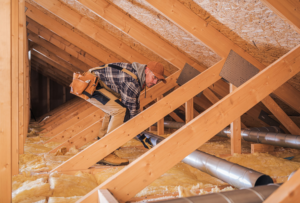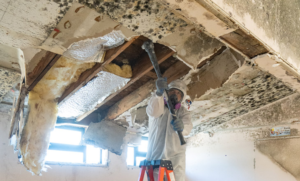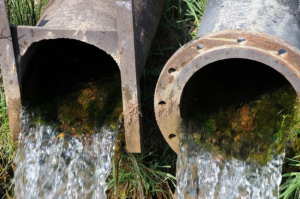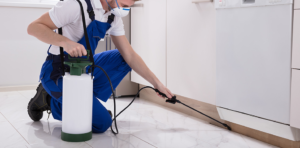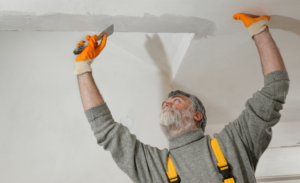Plumbers install and repair piping systems for water supply, drainage, and appliances like sinks, toilets, and faucets. They also inspect plumbing fixtures and systems to identify issues, such as leaks or clogs, and ensure compliance with local building codes.
Though often associated with residential work, plumbers also play an important role in new construction and commercial settings. They consult blueprints and architectural plans to lay pipe and secure various types of fixtures. Contact Gateway Plumbers of Aurora now!

A plumbing system is an intricate network of pipes that supply water to a building and remove wastewater. It’s a vital part of any home or business, providing clean water for drinking, cooking, washing, and cleaning while preventing water damage from leaks, flooding, and other disasters.
Professional plumbers install, repair, and maintain these systems. Understanding how a plumbing system works can help you spot problems like leaking faucets or low water pressure, which can be easily fixed with regular maintenance and inspections. Here are the basics of plumbing systems:
Water Supply System
The water supply system, also known as the potable water system, delivers fresh, drinkable water to fixtures throughout a home or business. This includes toilets, sinks, showers, and appliances like dishwashers and washing machines. The water supply system uses pipes that transport freshwater from a public water line or private well to each fixture, operating under pressure to deliver adequate flow and pressure.
Drainage System
While many people think of plumbing as the pipes that carry water from sinks, toilets, and showers, the entire plumbing system consists of much more. The drain-waste-vent (DWV) system is a collection of pipes that work together to bring in freshwater, remove waste water, and vent gases out of the house. This collection of pipes runs throughout a home or business and contains valves that control the flow of water, as well as fittings and piping materials that dictate how durable and efficient the system is.
Venting System
While less exciting than the water supply and drainage systems, the venting system is important for ensuring the health and safety of a building’s occupants. It consists of pipes that extend from the drainage system to the outdoors, often through the roof. The main function of the venting system is to regulate air pressure in the drainage pipes so that sewer gasses don’t build up and contaminate indoor spaces. The venting system also prevents water in drain traps from being siphoned back into the plumbing system, a problem that can lead to clogged pipes and hazardous mold growth.
Plumbing Fixtures
Plumbing fixtures are essential components that connect to a home’s water supply and waste removal systems. They control the flow of clean water for a variety of tasks and are available in a wide range of styles and materials to suit personal tastes. These fixtures include sinks, faucets, toilets, showers, and bathtubs. Some are freestanding while others are built into a wall or under a counter.
A well-functioning plumbing system is based on the installation and maintenance of these fixtures. Leaks, rust, clogs, and poor water pressure are common problems that can require the services of a plumber. Fortunately, there are ways to prevent and repair these issues. A good start is to replace old or worn-out fixtures with newer, more efficient models.
The type of fixture you choose depends on several factors, including your budget and the design aesthetic of your home. You should also consider how you use each fixture and what types of maintenance they require. For example, if you plan to install a kitchen faucet with a pull-out sprayer, you’ll want one that’s easy to clean and maintain. Likewise, choosing a durable, high-quality material like stainless steel or brass will ensure that your fixture lasts for years to come.
When purchasing new plumbing fixtures, consider their energy efficiency. Newer models are designed with conservation in mind, reducing water consumption and lowering utility bills without compromising functionality. Look for fixtures that carry the WaterSense label, a government-sponsored program that verifies a water-saving product’s performance.
In addition to reducing water usage, high-efficiency fixtures help to reduce environmental impact by cutting down on the amount of energy used to produce and deliver freshwater. This, in turn, lowers carbon emissions and helps conserve our limited natural resources.
While many people think that replacing their plumbing fixtures is a costly project, it can actually save homeowners money in the long run. Older fixtures are more likely to break down or leak, resulting in expensive repairs and replacement costs. Additionally, outdated fixtures can lead to the accumulation of bacteria and other contaminants that can aggravate health problems. Incorporating new, efficient fixtures into your home’s overall design can also increase its resale value.
Plumbing Installation
Plumbing systems are complex networks of pipes that carry water and waste materials to and from homes and businesses. Plumbers install and repair these systems, ensuring they are safe and functioning properly. Their work includes laying pipes, installing toilets and sinks, connecting appliances like dishwashers and washing machines, and more. Plumbers also use specialized tools to inspect and test pipe systems, such as video cameras and pressure gauges.
When installing new pipes, plumbers follow blueprints and architectural plans to lay out the pipe system. They may also have to cut through walls, floors, and ceilings to get to the pipes. When it comes to replacing existing pipes, plumbers must take care not to damage the surrounding structures. They can utilize a variety of tools to do this, including pipe cutters, wrenches, saws, pliers, pipe vises, and hammers. Plumbers also need to know how to read and interpret technical drawings and specifications.
Another important aspect of plumbing is ensuring proper drainage. This is accomplished by ensuring that all drains are properly connected and that there are no blockages in the system. Plumbers can also use specialized tools to clear blocked drains and sewer lines.
In addition to working with water and sewage, plumbers are also often called on to work with gas lines. They can install and repair gas lines for stoves, ovens, and water heaters, as well as perform leak detection services. Plumbers who specialize in working with gas tend to be licensed and have a high level of expertise.
Plumbers who work with clients directly need to have strong customer service skills. They must be able to explain complicated processes in simple terms and listen to their customers’ concerns. They must also be able to provide advice on how to maintain and improve the efficiency of a plumbing system. In addition, plumbers who work with the public must be able to pass background checks and drug tests. This is to protect the health and safety of their clients as well as the general public.
Plumbing Repair
Plumbers are regularly called on to repair a wide range of plumbing fixtures and systems. This work can include everything from repairing leaky faucets to unclogging drains and sewer lines. Plumbers often use advanced tools and techniques to detect and repair issues with pipes, joints, water heaters, and more. They are also skilled at troubleshooting and can identify issues that may not be obvious to the average person, such as a slow drainage problem or a strange smell coming from a vent.
Homeowners and property owners depend on their plumbing systems to provide them with clean, safe drinking water and efficient waste management. When these systems experience problems, it is important to have them repaired as quickly as possible to prevent further damage and costly repairs.
Residential plumbing services typically cover pipes, fixtures, and appliances in homes and apartment buildings. This includes installing new taps, toilets, and sinks; replacing old or damaged pipes; repairing leaky faucets; and cleaning and maintaining water heaters. Plumbers who specialize in residential plumbing can also install and repair gas lines for stoves, ovens, and water heaters.
Commercial plumbing services are generally larger in scale and involve addressing more complex water supply and drainage systems. This work can include laying out piping for new construction projects, inspecting existing systems to identify and repair leaks or other issues, and connecting appliances like water coolers and dishwashers to the piping network. Commercial plumbers may also work on plumbing systems in large office buildings, retail spaces, hospitals, and industrial settings.
In addition to repairing and maintaining plumbing fixtures, pipes, and appliances, plumbers can also help customers with their regular maintenance needs. This can include things like cleaning out drains, testing water pressure, and removing clogs. Regular maintenance can help extend the lifespan of these systems and reduce the likelihood of expensive repairs in the future. It is recommended that homeowners have their plumbing system inspected at least once per year by a professional plumber. This can catch small problems before they become bigger and more costly to fix. It can also reduce the risk of unexpected plumbing emergencies, such as a burst pipe or flooding.

